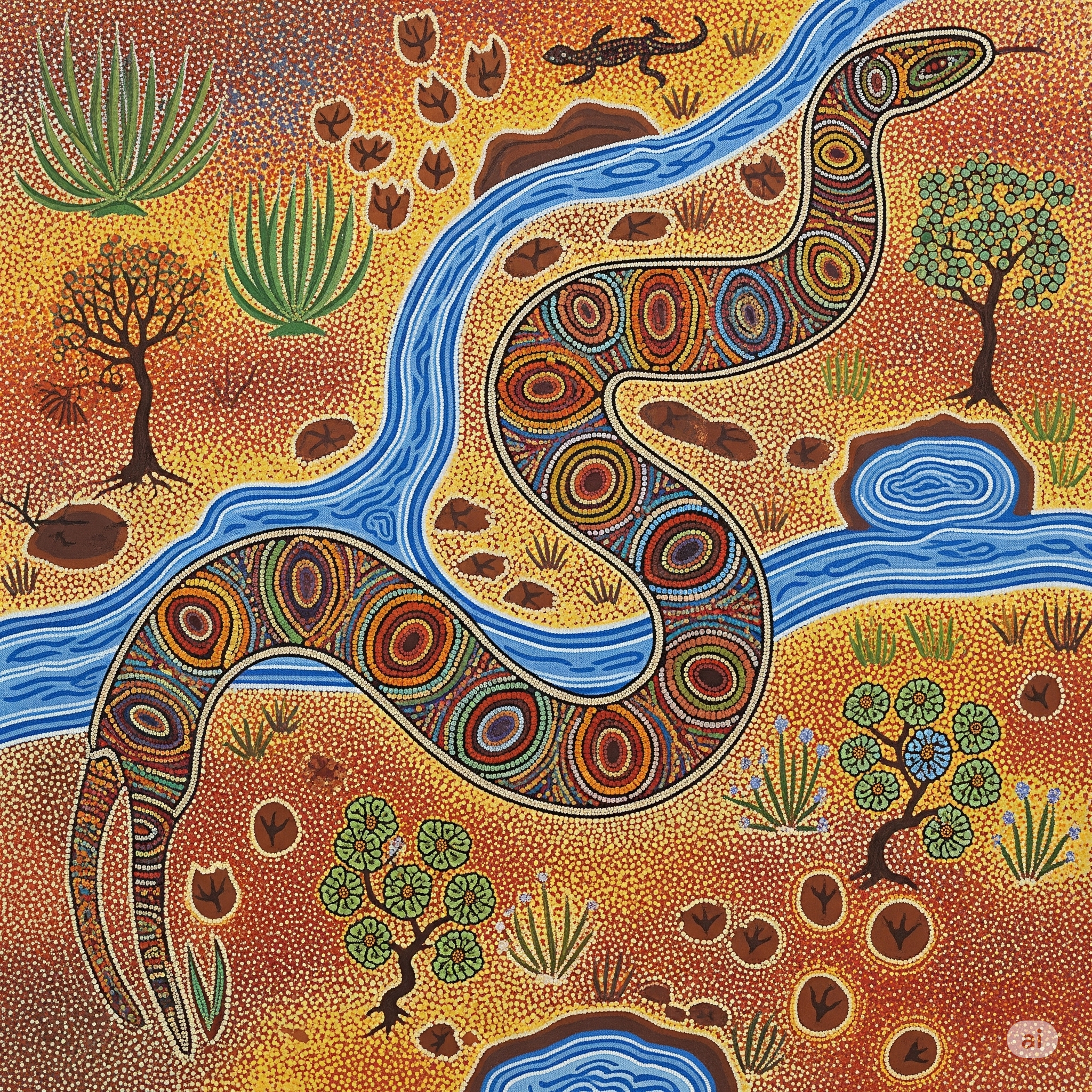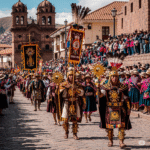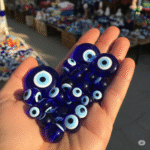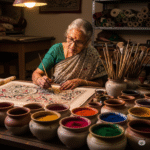In the vast and ancient land of Australia, where red deserts meet endless sky, one of the most powerful and enduring legends flows like a river through Aboriginal culture — the story of the Rainbow Serpent. It is not just a myth. It is a living belief, a sacred symbol of creation, water, and the rhythms of life itself.
What is the Rainbow Serpent?
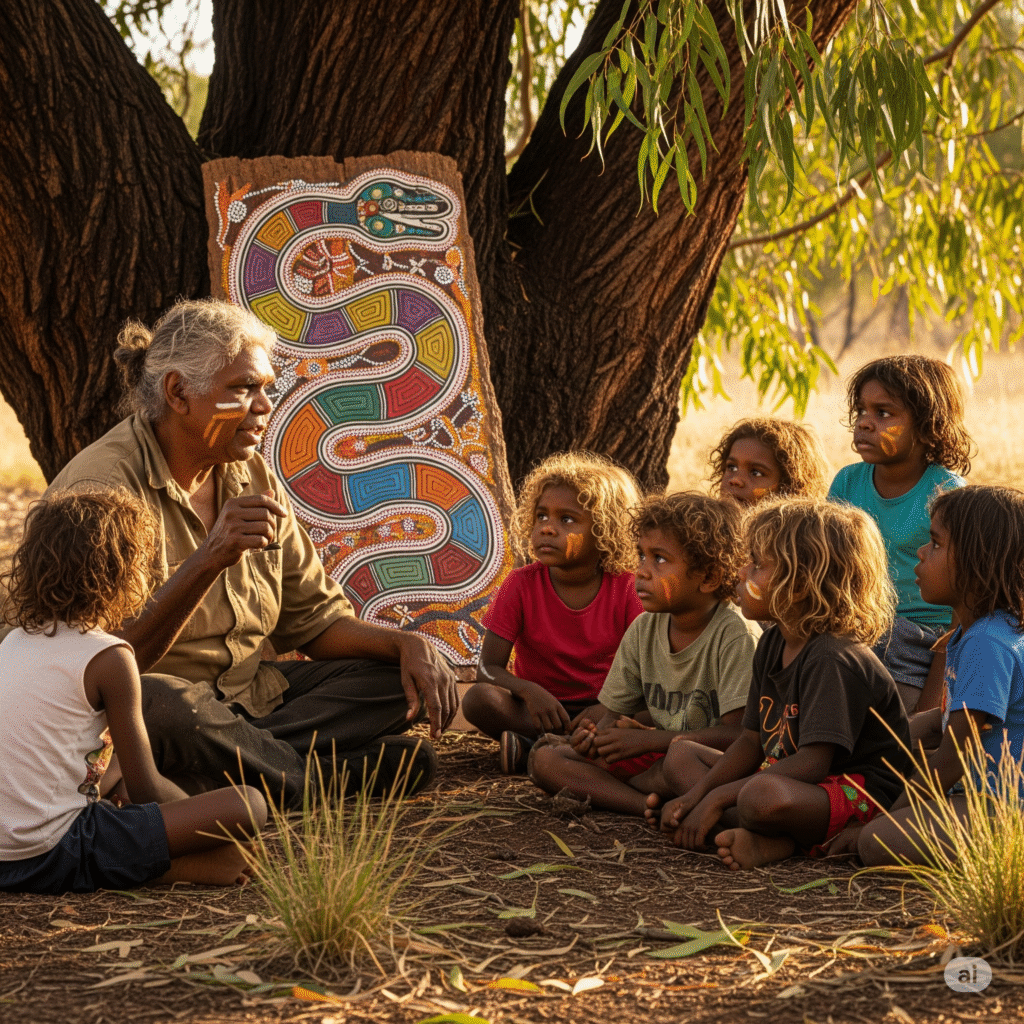
The Rainbow Serpent is a creator being in the Dreamtime stories of many Aboriginal nations across Australia. Known by different names in different language groups, it is often imagined as a massive snake with shimmering, rainbow-colored scales that lives in rivers, watering holes, and beneath the earth.
In many traditions, the Rainbow Serpent shaped the land during the Dreaming — a spiritual time before time — carving valleys, forming rivers, and bringing rain to nourish the earth. It is both life-giving and potentially destructive, revered with a mix of awe and caution.
A Story Told in Many Ways
There’s no single version of the Rainbow Serpent legend. Among the Yolngu people of Arnhem Land, the Rainbow Serpent is called Ngalyod, a mother figure linked to fertility and rebirth. In the traditions of the Gagudju people, she is known to emerge from waterholes during monsoon season. To others, she represents a guardian of sacred sites, punishing those who disrespect the land.
Despite the variations, some common themes flow through every telling: water, transformation, law, and balance between humans and nature. The Rainbow Serpent is both creator and custodian — a force to be honored.
Symbolism and Meaning
As her name suggests, the Rainbow Serpent is associated with rainbows — a natural symbol of water, sunlight, and renewal. Her form also echoes the undulating curves of Australia’s rivers and hills. Many Aboriginal artworks use dot patterns, swirling lines, and bold colors to represent the serpent’s movements and power.
In some stories, she also enforces moral codes, teaching communities how to live in harmony with one another and with nature. Disobedience often leads to drought, storms, or floods — reminders of the consequences of imbalance.
Celebrated Through Art and Ceremony
The Rainbow Serpent appears in rock paintings, bark art, body painting, and ceremonial dances across the continent. Some of the oldest known rock art sites in the world, found in Australia’s Northern Territory, contain depictions of this ancient being.
During festivals and rituals, the Rainbow Serpent is honored with music, storytelling, and dance. These ceremonies are not just performances — they are acts of cultural survival and spiritual communication, connecting people to their ancestors and land.
A Symbol of Cultural Survival
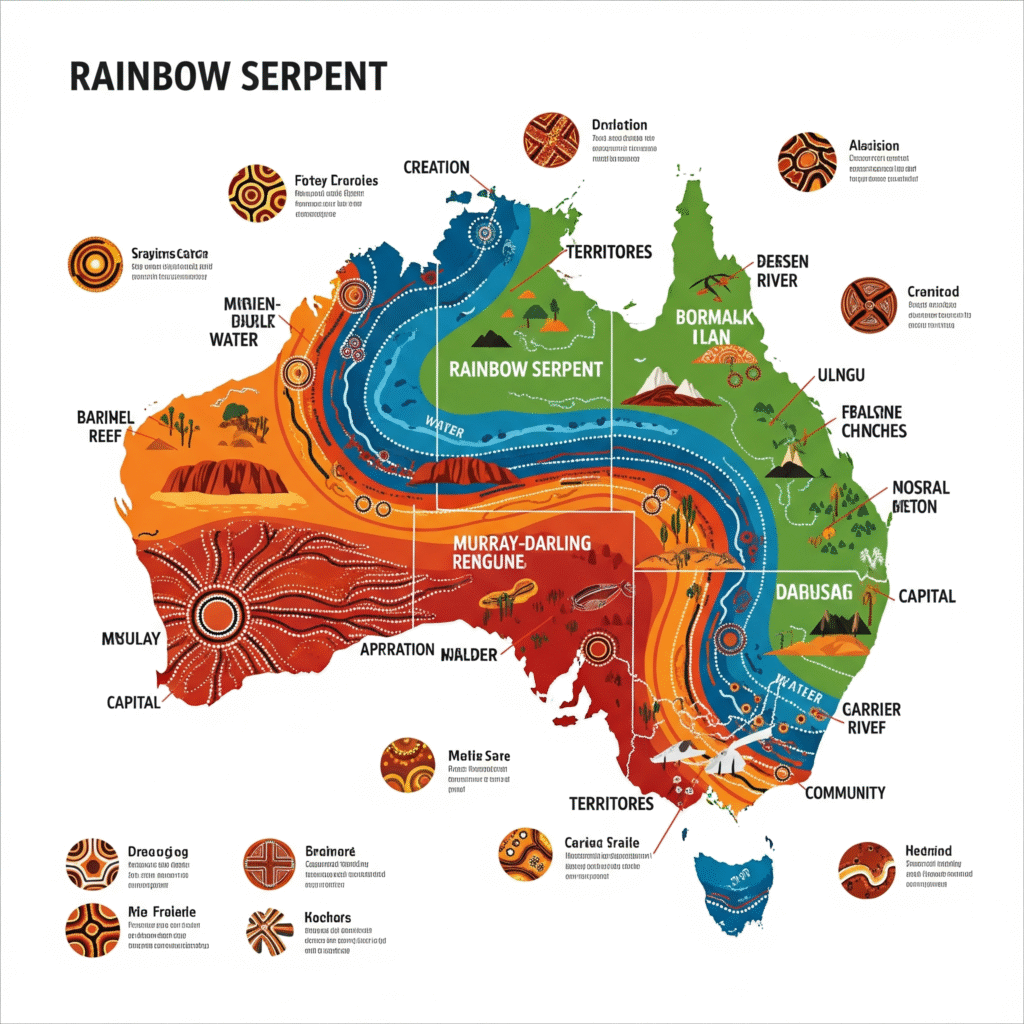
For Aboriginal communities, the story of the Rainbow Serpent remains as relevant today as it was thousands of years ago. It teaches care for the environment, respect for tradition, and awareness of the invisible forces that shape our world.
Even in modern Australia, the Rainbow Serpent appears in public murals, community flags, and even political symbols — a powerful reminder that the world’s oldest living culture continues to thrive, adapt, and pass down its wisdom.
In the winding body of the Rainbow Serpent lies more than a myth. It carries the memory of the land, the soul of a people, and a timeless message: when we honor where we come from, we walk in harmony with the earth.
